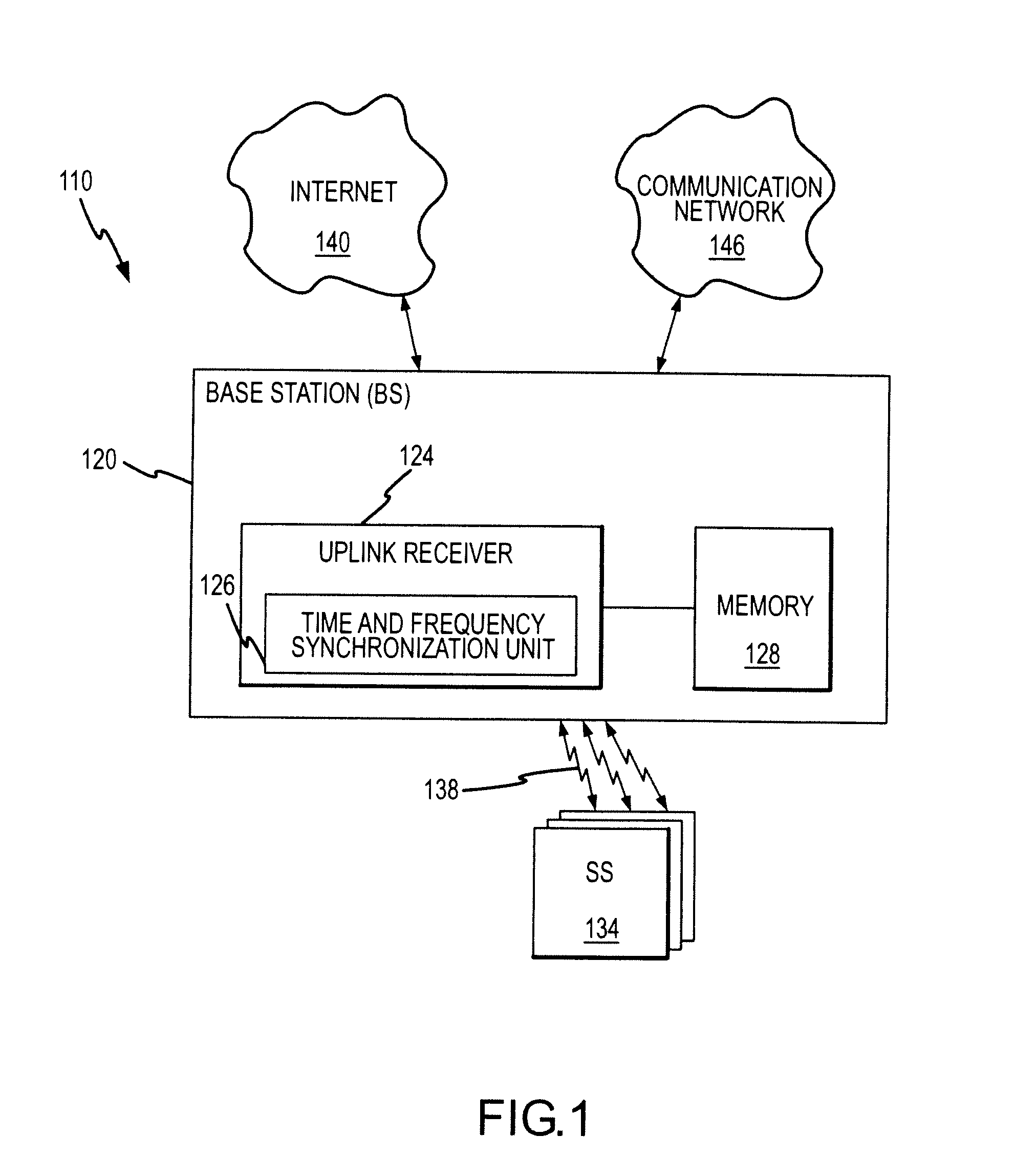Time and frequency synchronization method for ofdma uplink receivers and base stations
- Summary
- Abstract
- Description
- Claims
- Application Information
AI Technical Summary
Benefits of technology
Problems solved by technology
Method used
Image
Examples
Embodiment Construction
[0018]The present invention is directed to communication methods (and components implementing such methods) for better handling signals (such as access signals that may be called a multi-user signal) from multiple user devices or subscriber stations (SSs). To this end, the invention provides a technique for achieving joint time and frequency synchronization between a base station receiving user signals and one or more SSs. The synchronization technique of the invention is particularly well suited for interleaved OFDMA wireless communication systems and even more particularly, for use in uplink receivers of base stations (BSs) within a communication system implementing tile-based, interleaved OFDMA uplink. To this end, the synchronization and / or correction technique generally includes correcting for or canceling Multiple Access Interference (MAI) due to multi-user residual time delays and frequency offsets.
[0019]FIG. 1 illustrates a communication system 110 in which the synchronizati...
PUM
 Login to View More
Login to View More Abstract
Description
Claims
Application Information
 Login to View More
Login to View More - R&D
- Intellectual Property
- Life Sciences
- Materials
- Tech Scout
- Unparalleled Data Quality
- Higher Quality Content
- 60% Fewer Hallucinations
Browse by: Latest US Patents, China's latest patents, Technical Efficacy Thesaurus, Application Domain, Technology Topic, Popular Technical Reports.
© 2025 PatSnap. All rights reserved.Legal|Privacy policy|Modern Slavery Act Transparency Statement|Sitemap|About US| Contact US: help@patsnap.com



